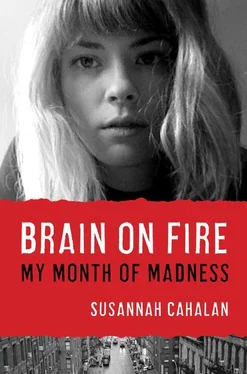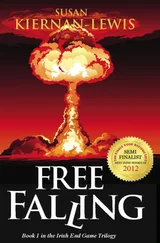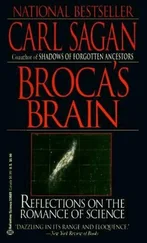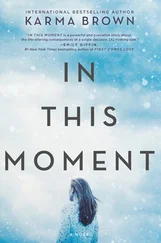59 20 to 30 percent of survivors develop it: Gwen Adshead, “Psychological Therapies for Post-Traumatic Stress Disorder,” British Journal of Psychiatry 177 (2000): 144–148.
60 relapses happen in about 20 percent of cases: Josep Dalmau et al., “Clinical Experience and Laboratory Investigations in Patients with Anti-NMDAR Encephalitis,” Lancet Neurology 10 (2011): 63–74.
61 In 2010, a Cambridge University study: Hannah L. Morgan, Danielle C. Turner, Philip R. Corlett, Anthony R. Absalom, Ram Adapa, Fernando S. Arana, Jennifer Pigott, Jenny Gardner, Jessica Everitt, Patrick Haggard, and Paul C. Fletcher, “Exploring the Impact of Ketamine on the Experience of Illusory Body Ownership,” Biological Psychiatry 69, no. 1 (2011): 35–41.
62 self-monitoring theory: Sharon Begley, “The Schizophrenic Mind,” Newsweek, March 11, 2002, www.newsweek.com/2002/03/10/the-schizophrenic-mind.print.html(accessed April 21, 2011). Dominic H. Ffytche, “The Hodology of a Hallucinations,” Cortex 44 (2008): 1067–1083.
63 generation effect: Philip D. Harvey et al., “Cortical and Subcortical Cognitive Deficits in Schizophrenia: Convergence of Classifications Based on Language and Memory Skill Areas,” Journal of Clinical and Experimental Neuropsychology 24 (2002): 55–66. Carol A. Tamminga, Ana D. Stan, and Anthony D. Wagner, “The Hippocampal Formation in Schizophrenia,” American Journal of Psychiatry 167 (2010): 1178–1193. Daphna Shohamy, Perry Mihalakos, Ronald Chin, Binu Thomas, Anthony D. Wagner, and Carol Tamminga, “Learning and Generalization in Schizophrenia: Effects of Disease and Antipsychotic Drug Treatment,” Biological Psychiatry 67 (2010): 926–932.
64 amygdala, an almond-shaped structure situated atop the hippocampus: Michael O’Shea, The Brain: A Very Short Introduction (Oxford: Oxford University Press, 2005). Rita Carter, Susan Aldridge, Martyn Page, and Steve Parker, The Human Brain Book (London: DK Adult, 2009). Elizabeth A. Phelps and Tali Sharot, “How (and Why) Emotion Enhances Subjective Sense of Recollection,” Current Directions in Psychological Sciences 17 (2008): 147–152, http://www.psych.nyu.edu/phelpslab/papers/08_CDPS_V17No2_147.pdf. Joseph E. LeDoux, “Emotion Circuits in the Brain,” Annual Reviews of Neuroscience 23 (2000): 155–185.
65 help encode and consolidate: Jesse Rissman and Anthony D. Wagner, “Distributed Representations in Memory: Insights from Functional Brain Imaging,” Annual Review of Psychology 63 (2012): 101–128. Richard C. Mohs, “How Human Memory Works,” HowStuffWorks.com, http://science.howstuffworks.com/environmental/life/human-biology/human-memory.htm.
66 Dr. Loftus has spent a lifetime: William Saletan, “The Memory Doctor: The Future of False Memories,” Slate.com, June 4, 2010, http://www.slate.com/articles/health_and_science/the_memory_doctor/2010/06/the_memory_doctor.single.html.
67 A team of New York–based neuroscientists in 2000 demonstrated this assumption in lab rats: Greg Miller, “How Our Brains Make Memories,” Smithsonian, May 2010, http://www.smithsonianmag.com/science-nature/How-Our-Brains-Make-Memories.html. “Big Think Interview with Joseph LeDoux,” BigThink.com, June 9, 2010, http://bigthink.com/josephledoux.
We hope you enjoyed reading this Free Press eBook.
“The bizarre and confounding illness that beset the 24-year-old New York Post reporter in early 2009 so ravaged her mentally and physically that she became unrecognizable to coworkers, family, friends, and—most devastatingly—herself… She dedicates this miracle of a book to ‘those without a diagnosis’… [An] unforgettable memoir.”
Elle
“Swift and haunting.”
Scientific American
“This fascinating memoir by a young New York Post reporter… describes how she crossed the line between sanity and insanity… Cahalan expertly weaves together her own story and relevant scientific information… compelling.”
Booklist (starred review)
“Compelling… a New York Post reporter recounts her medical nightmare.”
Mental Floss
“For the neurologist, I highly recommend this book on several grounds…First, it is a well-told story, worth reading for the suspense and the dramatic cadence of events…Second, it is a superb case study of a rare neurologic diagnosis; even experienced neurologists will find much to learn in it…Third, and most important, it gives the neurologist insight into how a patient and her family experienced a complex illness, including the terrifying symptoms, the difficult pace of medical diagnosis, and the slow recovery. This story clearly contains lessons for all of us.”
Cognitive and Behavioral Neurology
“Focusing her journalistic toolbox on her story, Cahalan untangles the medical mystery surrounding her condition… A fast-paced and well-researched trek through a medical mystery to a hard-won recovery.”
Publishers Weekly
It’s a cold March night in New York, and journalist Susannah Cahalan is watching PBS with her boyfriend, trying to relax after a difficult day at work. He falls asleep, and wakes up moments later to find her having a seizure straight out of The Exorcist . “My arms suddenly whipped straight out in front of me, like a mummy, as my eyes rolled back and my body stiffened,” Cahalan writes. “I inhaled repeatedly, with no exhale. Blood and foam began to spurt out of my mouth through clenched teeth.”
It’s hard to imagine a scenario more nightmarish, but for Cahalan the worst was yet to come. In 2009, the New York Post reporter, then 24, was hospitalized after—there’s really no other way to put it — losing her mind. In addition to the violent seizures, she was wracked by terrifying hallucinations, intense mood swings, insomnia and fierce paranoia. Cahalan spent a month in the hospital, barely recognizable to her friends and family, before doctors diagnosed her with a rare autoimmune disorder. “Her brain is on fire,” one doctor tells her family. “Her brain is under attack by her own body.”
Cahalan, who has since recovered, remembers almost nothing about her monthlong hospitalization—it’s a merciful kind of amnesia that most people, faced with the same illness, would embrace. But the best reporters never stop asking questions, and Cahalan is no exception. In Brain on Fire , the journalist reconstructs—through hospital security videotapes and interviews with her friends, family and the doctors who finally managed to save her life—her hellish experience as a victim of anti-NMDA receptor encephalitis. The result is a kind of anti-memoir, an out-of-body personal account of a young woman’s fight to survive one of the cruelest diseases imaginable. And on every level, it’s remarkable.
The best journalists prize distance and objectivity, so it’s not surprising that the most difficult subject for a news writer is probably herself. And although she’s young, Cahalan belongs firmly to the old school of reporters—she writes with an incredible sense of toughness and a dogged refusal to stop digging into her past, even when it profoundly hurts. One of the most moving moments in Brain on Fire comes when Cahalan, preparing a New York Post article about her illness, watches videos of herself in the hospital. She’s horrified, but finds that she can’t look away. “I was outrageously skinny. Crazed. Angry,” she writes. “I had the intense urge to grab the videos and burn them or at least hide them away, safe from view.”
Читать дальше












